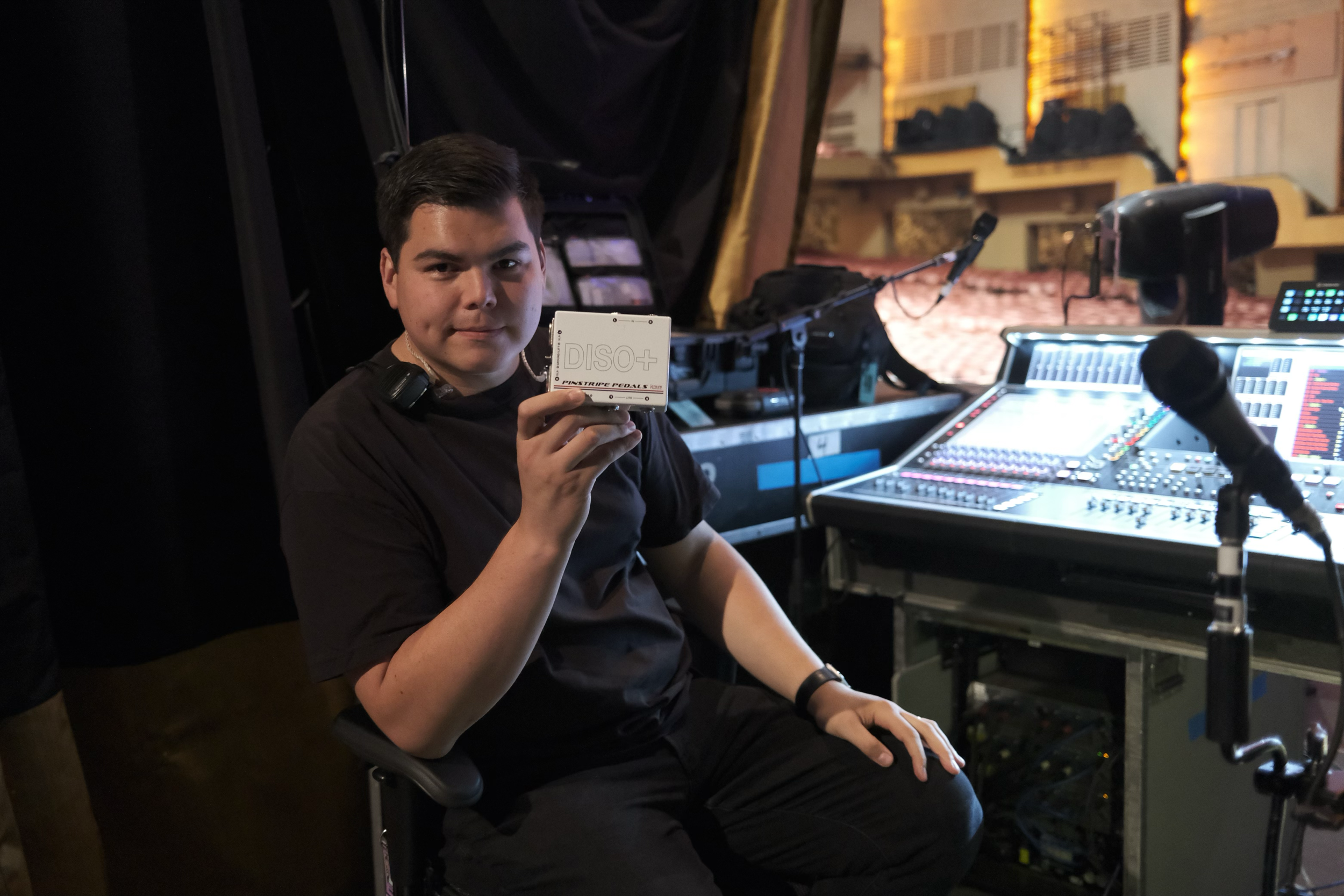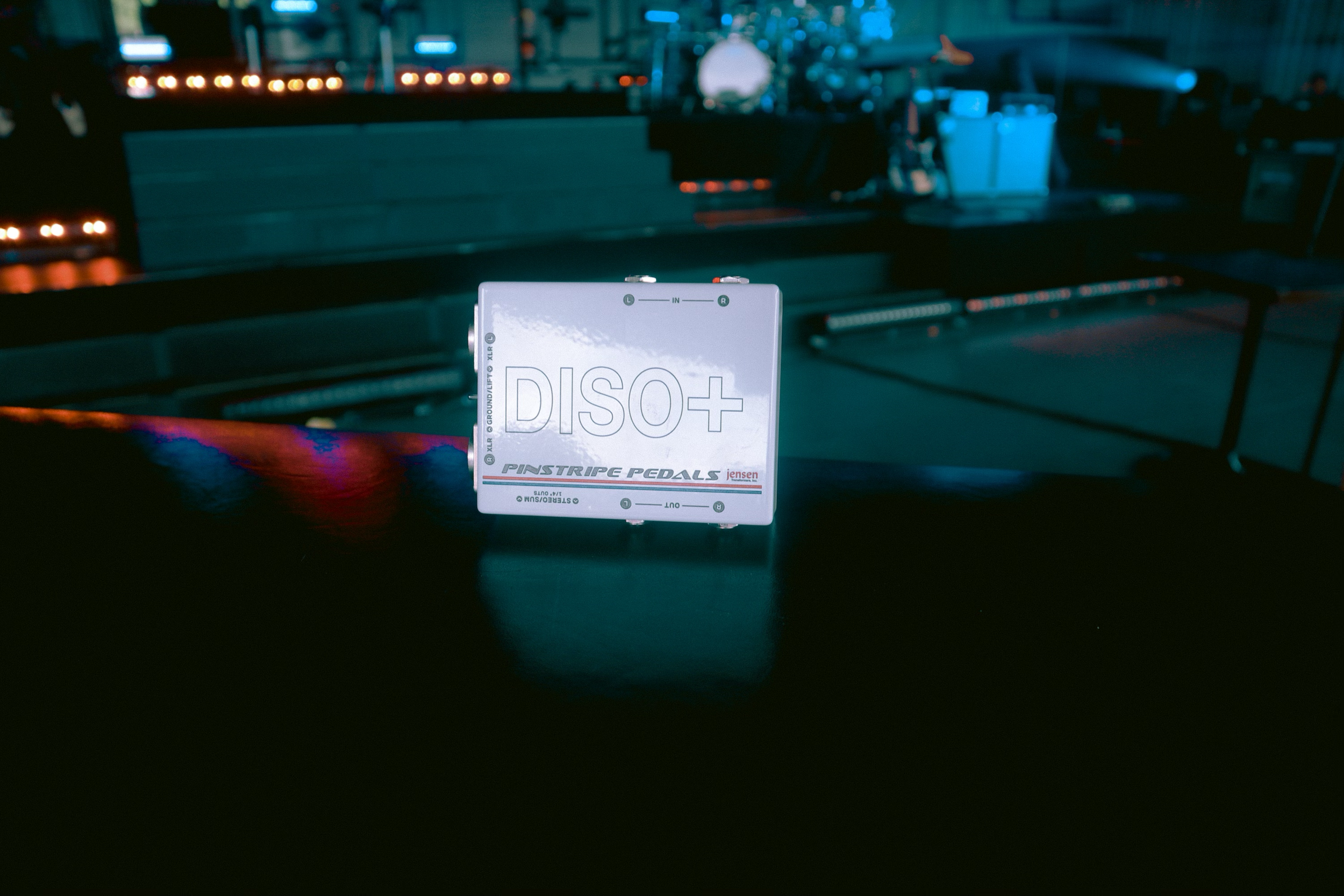


Pinstripe Pedals is soon going to become a household name when it comes to rock-solid audio devices for both live sound and in the studio.
I remember the day I learned about them a few years ago from one of my guitar player friends. At the time he was using a new Strymon Iridium; one of the popular amp-in-a-box pedals making its rounds in the worship guitar community. After one particular rehearsal, my friend and I were discussing his tone. He explained that whenever he plugged in his Iridium into his audio interface at home to dial in his tone and practice he sounded one way, but when he had to plug his guitar in at church into a Radial Pro D2, he always felt like it sounded too quiet and overly dull. The next week he came in with a little white box called the DISO+. Quickly googling what this device was, I learned it was built to directly solve the issue of unbalanced/line out devices prevalent in many modern DSP amp modelers. The difference was night and day. His tone was more clear, punchy, and reminiscent of what he heard when he was practicing at home.
So why is this relevant to the audio community? Not everyone is using DSP modelers for guitars.
This is true, but there are many more situations where I have found a DISO+ or a MISO (the mono version) to be the best solution for an input source. As far as my own personal anecdote, I did a short tour in the fall of 2022 with a 4 piece band + the artist. We had a collective ten keyboards as well as a four drum trigger inputs. Between the one offs surrounding the tour and the tour itself, we used a multitude of DI options including Radial Pro series, J48, JDI, Neve RNDI, and even some Klark Teknik DIs. Some worked fine, some overloaded from the level output by the triggers and keys samples, and some did not work at all. What I realized is that all of these instrument inputs were much closer to line level than they are mic level. This is where the DISO comes into play, but first, a few ground rules about gain structure and DIs:
From smallest amount of signal to largest we have Mic Level > Instrument Level > Line Level
Analog consoles preamps used to primarily work with mic level inputs only because most inputs required a microphone. Nowadays, the number of mics on stage is shrinking due to more and more digital inputs.
Modern digital console preamps are typically built to handle anything from line level to a very low mic level.
Traditional DIs use utilize a transformer that will reduce the incoming unbalanced 1/4” signal by about 20dB. This allows higher output instruments like keyboards and drum modules to not overload a traditional mic preamp that cannot accommodate higher input signals.
Traditional passive DIs are designed to take an unbalanced 1/4” signal and turn it into a balanced XLR signal to be able to run the distance of copper between the stage box and the console.
Traditional DIs also give you there ability to lift the ground in the event of a ground hum.
Pinstripe took these concepts and swapped the usual transformer with one that is wound 1-to-1 which means the signal loss is less than 0.5dB. This means that effectively the unbalanced 1/4” signal level going into the DISO+ will output as balanced XLR. This is the magic behind what they are doing. They are building rock-solid, hand-crafted products that allow me as the engineer the purest gain structure possible on stage. After using them on every keyboard input for 30 show tour this spring, I can say these things are road-ready.
They built a product for modern guitarists, but consequently built one of the most useful audio tools in the modern age.
I would encourage you to pick one up and try it on a keyboard or SPD input. My first experience of how big of a difference is makes practically and not just theoretically was when I did a one-off with the same same backline, but different audio package. The only difference was Radial DIs instead of Pinstripe. Obviously my gain was different, but sonically, the transformer saturation across ten keyboards changed the mixes drastically. I know there is a time and place for that type of DI saturation, but when you have so many inputs on stage, the clarity that comes with not producing all of that extra saturation in the first place and letting it be an intentional choice on the mix end is absolutely game-changing.
MSRP - $279
If you have any other specific questions, feel free to email me at josh@spacebearaudio.com
